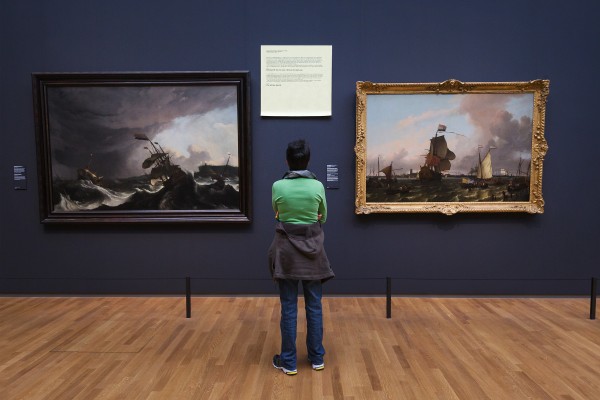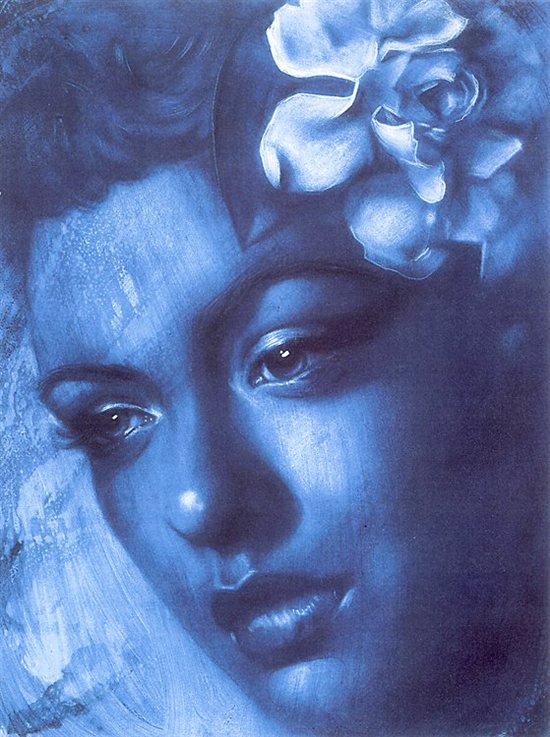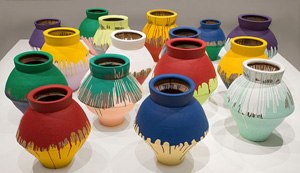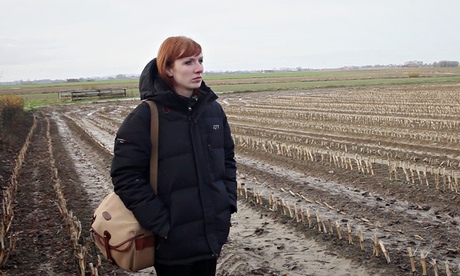
Selected work: Chelsea
Without Andrew Ginzel‘s List (on hiatus until September) and Facebook (recently deactivated), I’ve been left on my own to figure out what shows are out there this summer. Recently I’ve begun using NY Art Beat, an iPhone app that lists galleries by neighborhood. Gallery go-ers can review shows, bookmark them, and then view all the bookmarked locations on a handy map (my map is posted at right), making afternoon planning much easier. Apparently Walter Robinson had the same list of things-to-see on Tuesday because he had signed into all the gallery guest books right before I did. Alas, we never bumped into each other.
Exhibitions featured (Click links for full exhibition statements and images):
“All a tremulous heart requires,” co-curated by Brad Hajzak. ZieherSmith,New YOrk, NY. Through August 15, 2014.
“Displayed,” curated by Matthew Higgs. Anton Kern, New York, NY. Through August 22, 2014.
“Jeffrey Courtland Jones: Did I See You See Me (In a New Light),” Kathryn Markel Fine Arts, New York, NY. Through August 29, 2014.
“Justine Hill: Pick and Place,” Kathryn Markel Fine Arts, New York, NY. Through August 29, 2014.
“Paintings on Paper,” David Zwirner, New York, NY. Through August 15, 2014.
“Conversations,” curated by Sharon Louden. Morgan Lehman, New York, NY. Through August 22, 2014.
“About a Mountain,” curated by Holly Jarrett. Asya Geisberg, New York, NY. Through August 15, 2014.
“Carl Ostendarp: Blanks,” Elizabeth Dee, New York, NY. Through September 6, 2014.
“Jodie Manasevit and Eric Dever,” Berry Campbell, New York, NY. Through August 9, 2014.
“JJ Manford and Max Razdow: Through Every Leaf,” Freight + Volume, New York, NY. Through August 16, 2014.
“Another Look at Detroit, Parts I and II” curated by Todd Levin. Two locations: Marianne Boesky and Marlborough Chelsea, New York, NY. Through August 8, 2014.
Gone but not forgotten:
“Franklin Evans: paintingassupermodel,” Ameringer McEnery Yohe, New York, NY. Through August 1, 2014.
“Don’t Look Now,” organized by Jesse Greenberg and MacGregor Harp of 247365. Zach Feuer, New York, NY. Through July 26, 2014. Thanks for letting me have a look even though the show was over.
“Joan Mitchell: The Black Drawings and Related Works 1964-1967,” Lennon Weinberg, New York, NY. Through June 28, 2014. Thanks for taking me upstairs to see these drawings even though the show had been down for a month. Time flies in the summer.
——
Two Coats of Paint is licensed under a Creative Commons Attribution – Noncommercial-No Derivative Works 3.0 United States License. For permission to use content beyond the scope of this license, permission is required.
SOURCE: Two Coats of Paint – Read entire story here.

Houston Ballet Welcomes New Chief of Development Angie Lane
Houston Ballet has announced that Angela Lane has joined its senior management team as Chief Development Officer.
SOURCE: Ballet News – Read entire story here.

Royal Ballet Of Flanders Fires Artistic Director

“Although the ballet did not provide an explanation for letting her go, from the beginning, [Assis] Carreiro was a controversial choice for the role of artistic director. … Dancers wrote a letter to the organisation’s board late last year citing that 69{b29860ee6b7af5bf99d3058cca3182816eed414b47dab251265e93b8c00e69b1} of them had voted no confidence in the artistic director. Eventually, one-third of the company left.”
SOURCE: ArtsJournal» DANCE – Read entire story here.

Art Is Therapy at Rijksmuseum, Amsterdam
Shotgun Reviews are an open forum where we invite the international art community to contribute timely, short-format responses to an exhibition or event. If you are interested in submitting a Shotgun Review, please click this link for more information. In this Shotgun Review, Christina Conklin reviews Art Is Therapy at the Rijksmuseum in Amsterdam.

Post-it note discussing two paintings; installation view, Art Is Therapy, 2014. Courtesy of the Rijksmuseum, Amsterdam. Photo: Olivier Middendorp.
Viewers are supposed to marvel at Rembrandt’s Night Watch (1642), but do they really? Many of us have unsatisfying responses to the works of the Masters, yet we still troop through the museums by the millions. This disconnect has led Alain de Botton and John Armstrong to guest-curate a selection of 150 works at the Rijksmuseum from their pragmatic point of view.
De Botton and Armstrong assert that art’s purpose is to heal some of the pain and malaise felt in life. It would be easy to dismiss this as didactic and anodyne. But reclaiming this broad, utilitarian view of art and reconnecting with the public in an approachable way is not simplistic. It is an important critical challenge to the reductive and self-referential intellectualism that dominates much contemporary discourse.
Tagging each work with large, yellow Post-it-style notes, the curators chat with the audience about the psychological dynamics of viewing art in a large museum. The notes aim to demystify the thoughts and feelings of viewers. Some notes describe the purpose of museums (“cathedrals of art”), while others name the alienation we feel in a room crowded with strangers. Democratizing the viewing experience in this way touches the soft underbelly of art, where contemporary critique has rejected notions of social purpose, beauty, and meaning and thus alienated much of the public.
Some of the texts hit the nail just right, opening up works in thoughtful ways, while others are a bit preachy or wordy, losing people halfway through. Paired with Pieter Jansz’s Interior of the Sint-Odulphuskerk in Assendelft (1649)—a small oil painting of a sermon being preached in a bare church bathed in light—is a note describing the artist’s intent to convey a “slightly stern, but welcome message: You have to fight off distraction, it can ruin your life.” Below, in larger text, a societal “Sickness” is diagnosed: “My life revolves around business, distraction, chaos, Twitter.” It became easy to simply read the sicknesses; a more careful crafting of the text and graphics, inverting the illness and cure, would have led to a clearer curatorial statement.
Much of the art in the Rijksmuseum’s collection was created to enlighten or heal the viewer, so it is an ideal environment in which to propose that art can and should address the communal and even spiritual aspects of life. De Botton and Armstrong developed a show that engages with a general audience of families, tourists, and other “art outsiders”; may it also instigate a dialogue within the art world toward a more integrated understanding of art.
Art Is Therapy is on view at the Rijksmuseum in Amsterdam through September 7, 2014.
Christina Conklin lives near San Francisco, where she recently completed her MFA at California College of the Arts. Her sculptural and installation work examines histories, rituals, and the scale of time.
Pieter Jansz. Interior of the Sint-Odulphuskerk in Assendelft, 1649; installation view, Art is Therapy, 2014. Courtesy of the Rijksmuseum, Amsterdam. Photo: Olivier Middendorp.
SOURCE: DAILY SERVING – Read entire story here.

Sketchbook Pages to Get Lost In



I know nothing formal about Tanxuan, except that he’s from Shenzhen, China and that he’s got an incredible talent for drawing, with some of the most beautiful sketchbook pages I’ve ever laid my eyes on.
His Instagram is a constant feed of jaw dropping inspiration with drawings ranging from seductive women to odd foods to incredible overlapping cityscapes and the people within them. 




SOURCE: Doodlers Anonymous – Read entire story here.

Curators Trash-Talking At The Smithsonian Summer Showdown

A bracket-style competition by public vote to choose the Smithsonian Institution’s “most iconic” object has led to a barrage of competitive tweeting and Photoshopping, as a Pullman train car races against the original “Star-Spangled Banner” flag, and a Tyrannosaurus rex skeleton battles the National Zoo’s young panda (“Bao Bao may be small, but at least she’s not extinct.”) and the space shuttle Discovery (“What is black and white AND has been to space? Not Bao Bao.”).
SOURCE: ArtsJournal» VISUAL – Read entire story here.

Working Through My Moods
 |
||
| BlueBillie by Shen, acrylic on claybord, 18 x 24. | ||
I am finding myself in a little bit of a battle with the blues. Whenever I'm feeling down, I find it especially difficult to create. However, I am learning more and more as I get older that it is important to pay attention to my moods—so I don't I end up burning out. Sometimes, I find that I just need to rest, stop procrastinating about something, or pay a little closer attention to my priorities to make certain they are in the proper order. But I often ask myself, "How do I step out into the wonderful world of painting and creation in general if I am not feeling like it?" Here are the steps I go through:
1. Creating is my job. I need to remember that I have to go to work sometimes when I don't feel like it, just like the local banker does. And, there were certainly lots of days I remember not wanting to go to school—just like my teen! Not to mention, I chose the career of art because I love it…and I've often had to love it more than food!
2. The feelings may linger, but no two days creating are ever the same. When I get into my work, creating an acrylic painting like these here, the world usually looks a little bit brighter or if not, it certainly helps to try and be productive rather than just sit around and wait for my mood to change. More often than not, I am glad that I tried and sometimes the results are spectacular!
3. Get Inspired! Look at some amazing art in books, museums, galleries, or online. Or I'll read some of my favorite writings like "The Art Spirit" by Robert Henri or "My Life" by Marc Chagall. Then, there are movies like "Exit through the Giftshop" or "Basquiat"—seeing the lives of such prolific artists certainly leaves me in the mood to throw some paint around!
 |
|
| BillieSwirls by Shen, acrylic painting, 13 x 19. |
This topic also reminds me of one of my favorite quotes from Ralph Waldo Emerson, "Do not be too timid and squeamish about your actions. All life is an experiment. The more experiments you make the better. What if they are a little course, and you may get your coat soiled or torn? What if you do fail, and get fairly rolled in the dirt once or twice? Up again, you shall never be so afraid of a tumble."
When there's nothing to lose, but possibly a great gain on the other side, why not give it a shot? Maybe I'll have a tremendous painting breakthrough that will make my soul sing!
–Shen
Shen loves making the flat surface of a painting or drawing come to life. A professional artist and entrepreneur for more than 25 years, she lives to discover new techniques, mix media, and make difficult concepts simple! You will often find her painting live at events of all kinds to "wow" her audience. Her work has been collected by celebrities, corporations, and galleries spanning the globe. She is also an art instructor and keynote speaker, speaking to artists about how to market themselves in new, fun, and creative ways. Shen lives in Vail, Colorado, with her husband and three beautiful daughters. More of Shen's work may be viewed on her website.
SOURCE: Artist Daily – Read entire story here.

CC Search (Copyright free images)
I am often asked to recommend a website to go to for Copyright free images. The Electronic Library at Cardiff Met offers many links to image databases that we recommend, some (marked with a black or a green copyright symbol) like Bridgeman Education and Visual Arts Data Service offer copyright free images for educational use.
I can also recommend a single page to which you can navigate on the internet which will allow you to search a whole selection of different image databases …not just images of art and design… made available under a Creative Commons licence.
Creative Common licences all offer, as minimum, permission to copy so long as the image is marked clearly with details of who first created it (attribution). To learn more about Creative Commons licences (which are voluntarily applied by creators to their works and can apply to text, images , music and all copyrighted materials) you should go here.
To search for all those Creative Commons licensed images go here. Enter a keyword and select a source to search from the range offered ( various interesting websites ) results will bring back Creative Commons licenced images, moving images and sound.
SOURCE: Jenny’s Art, Design and Architecture blog – Read entire story here.
Aimee Heckel: Hocus-Focus: This Photographer’s Magic Touch with Camera Is a Work of Art
I open the door and pause. It’s dark and warm. I’m not sure what to expect, but I know something unusual awaits. That’s the weirdest part: How normal this feels.
Read more: Photography, Weird, Colorado, Art, Erotica, Fine Art, Gmark, G. Mark Lewis, Weird News News
SOURCE: Photography on Huffington Post – Read entire story here.

Contemporary Choreography Is Hard, Says Natalia Osipova

“In ballet, the muscles on the inside part of your legs work, but here you use the muscles on the outside of your legs. There’s a lot of pressure on the knees, which you don’t get in classical ballet, and you dance practically barefoot, which is also unusual. Lots of falling movements – when we were rehearsing we were covered in bruises, all beaten and battered!”
SOURCE: ArtsJournal» DANCE – Read entire story here.

When Art Was Dangerous
Some political artists want to change the way you think. Ai Weiwei just wants you to relate—and it is the subject of a longer review, in my latest upload.
The Chinese artist has paid dearly for asking you to listen. He has suffered house arrest and prison. He has been beaten, and he displays MRIs of his brain hemorrhage as a work of art. He presents his work as both documentary record and personal history. He ends up at once too detached and too sentimental, too literal and too eager to please. Yet he can still recover something precious about art, its dangers. 
Ai spent eighty-one days in prison, in 2011. He had not demanded an end to the regime for its record on human rights, because in China (face it) there are limits. Officials had even commissioned him as an artistic consultant to the Beijing National Stadium in 2008, and they encouraged his Shanghai studio as part of a growing arts district—although they soon enough tore it down. No, he had merely called China to account for the loss of life in the 2008 Sichuan earthquake, and indeed he had titled his exhibition in Munich the year before “So Sorry.” For Ai’s retrospective, through yesterday (August 10) at the Brooklyn Museum, he fills a long wall with the names of dead children, ruled like a ledger. You may also stop to hear a recital of their names, for he feels so close that he can almost talk to them and hear them speak.
In his art, too, Ai wants to build a lasting foundation and to demand a personal response. One need not even enter the museum lobby to encounter his aspirations, in the weight of six iron boxes, as imposing as anything by Richard Serra. The same materials take the shape of milk cartons at the base of each one, and kids are among the first to climb up to peek into each box. When they do, they see a recreation of what Ai calls the six worst moments in his confinement, although they look ordinary enough. One may sense nothing more than the precious humanity of eating, sleeping, and using the toilet. One will not feel the threat of Serra’s towering walls and flung lead.
One will, however, find it easy to respond, maybe even too easy. He covers a floor with rebar—more than seventy tons salvaged from the ruins, each bar painstakingly made straight. He has carpeted rooms in the past with sunflower seeds in hand-painted porcelain. When he spreads more than three thousand crabs in a circle of red and blue, because “river crabs” sounds like “harmonious” in Chinese, he is mocking the language of state propaganda. Yet he also cherishes the harmony, in opposition to a snake coiled on the ceiling above. As he lays his art flat to the floor, he is spreading its beauty, while also flattening the allusions.
 As an artist, Ai aims for the heart. He also goes right for the literal, with the stark equation of Minimalism and brutality in those boxes—or the pale realism of the props and fiberglass models within. His retrospective hardly bothers with chronology, as curated by Mami Kataoka of the Mori Art Museum in Tokyo and Brooklyn’s Sharon Matt Atkins, for his art is almost always in the present, even when it recalls China’s past. And he does borrow from Chinese traditions, as with sculpture in precious woods. A rosewood box recalls one that belonged to his father, a poet denounced as a Rightist, while loose tea takes on unexpected weight as houses. Naturally it also carpets the floor.
As an artist, Ai aims for the heart. He also goes right for the literal, with the stark equation of Minimalism and brutality in those boxes—or the pale realism of the props and fiberglass models within. His retrospective hardly bothers with chronology, as curated by Mami Kataoka of the Mori Art Museum in Tokyo and Brooklyn’s Sharon Matt Atkins, for his art is almost always in the present, even when it recalls China’s past. And he does borrow from Chinese traditions, as with sculpture in precious woods. A rosewood box recalls one that belonged to his father, a poet denounced as a Rightist, while loose tea takes on unexpected weight as houses. Naturally it also carpets the floor.
His art is often double edged but not necessarily edgy. Ai sustains a bad-ass attitude and a healthy sense of humor, as when he directs his middle finger at the camera. His friendly, banal style often holds a touch of cunning aggression. He is also, to his credit, first and foremost a visual artist, without the dependence on text art, conceptualism, crawl screens, and mass-media quotation of much political art in America. He is literal, but not dogmatic. One can enjoy his work for its irony or its innocence, because so plainly does he.
| Read more, now in a feature-length article on this site. |
SOURCE: Haberarts – Read entire story here.

Awesome new piece by Sril Art from Salt Lake City…

Awesome new piece by Sril Art from Salt Lake City (https://globalstreetart.com/sril).
SOURCE: Global Street Art – Read entire story here.

Chloe Dewe Mathews’s Shot at Dawn: a moving photographic memorial
During the first world war hundreds of soldiers, many of them teenage volunteers, were shot by firing squad for cowardice or desertion. Chloe Dewe Mathews’s photographs of the mostly forgotten sites of their execution provide a poignant memorial of their tragic fate
James Crozier was 16 when he presented himself at his local army recruiting office in Belfast in September 1914. He was accompanied by his mother, Elizabeth, who tried in vain to prevent him enlisting. The recruiting officer, who also happened to be called Crozier, assured her he would look out for her son and "would see that no harm comes to him".
Continue reading…
SOURCE: Photography | The Guardian – Read entire story here.


